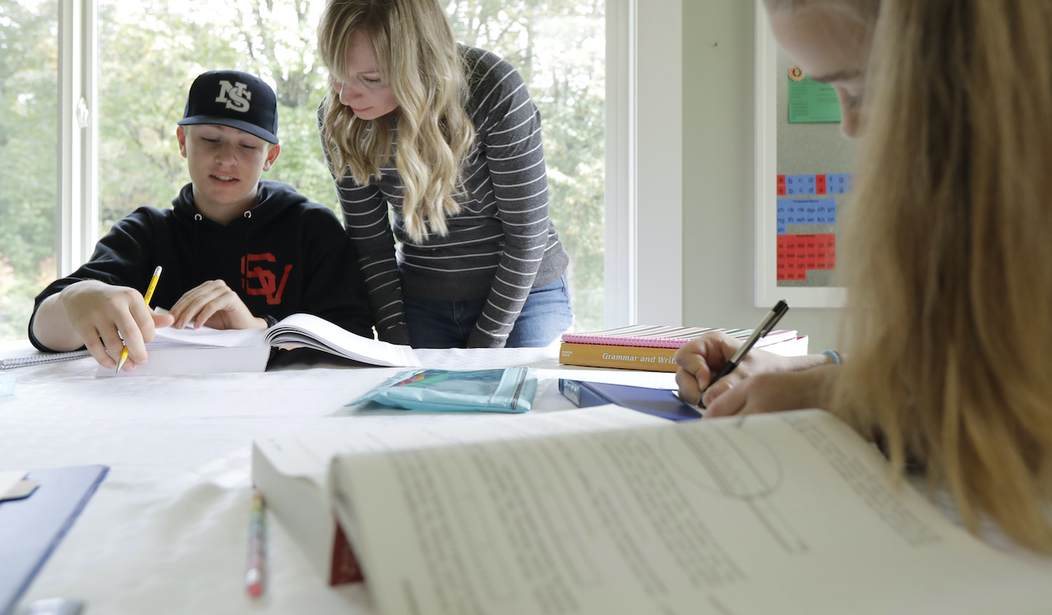The public elementary and secondary schools in the District of Columbia spent $30,115 per pupil during the 2016-2017 school year, according to Table 236.75 in the Department of Education's "Digest of Education Statistics."
But only 23% of the eighth graders in the district's public schools were proficient or better in reading in 2019, according to the department's National Assessment of Educational Progress, or NAEP, tests.
Similarly, only 23% of eighth graders in the district's public schools were proficient or better in mathematics.
Clearly, the government-run schools in our nation's capital did not give taxpayers their money's worth.
Yet, the District of Columbia was not the only jurisdiction where public schools cost taxpayers significant money and gave little in return.
The eight states that followed the District of Columbia with the nation's worst eighth-grade reading scores in 2019 were Alaska, New Mexico, Alabama, Texas, Mississippi, West Virginia, Oklahoma and Louisiana.
The public schools in Alaska spent $19,396 per pupil in 2016-2017. But only 23% of the eighth graders in Alaska's public schools were proficient or better in reading in 2019, and only 29% were proficient or better in math.
The public schools in New Mexico spent $11,596 per pupil in 2016-2017. But only 23% of the eighth graders in New Mexico's public schools were proficient or better in reading, and only 21% were proficient or better in math.
The public schools in Alabama spent $10,615 per pupil in 2016-2017. But only 24% of the eighth graders in Alabama's public schools were proficient or better in reading, and only 21% were proficient or better in math.
Recommended
The public schools in Texas spent $11,985 per pupil in 2016-2017. But only 25% of the eighth graders in Texas public schools were proficient or better in reading, and only 30% were proficient or better in math.
The public schools in Mississippi spent $9,661 per pupil in 2016-2017. But only 25% of eighth graders in Mississippi public schools were proficient or better in reading, and only 24% were proficient or better in math.
The public schools in West Virginia spent $12,566 per pupil in 2016-2017. But only 25% of eighth graders in West Virginia public schools were proficient or better in reading, and only 24% were proficient or better in math.
The public schools in Oklahoma spent $8,935 per pupil in 2016-2017. But only 26% of eighth graders in Oklahoma public schools were proficient or better in reading, and only 26% were proficient or better in math.
The public schools in Louisiana spent $12,502 per pupil in 2016-2017. But only 27% of eighth graders in Louisiana public schools were proficient or better in reading, and only 23% were proficient or better in math.
Students taking the NAEP reading and math tests can reach three different grade-specific "achievement levels." The first is "NAEP Basic," which is described as "denoting partial mastery of prerequisite knowledge and skills that are fundamental for proficient work at each grade level assessed." The second is "NAEP Proficient," which is described as demonstrating "competency over challenging subject matter, including subject-matter knowledge, application of such knowledge to real-world situations, and analytical skills appropriate to the subject matter." The third is "NAEP Advanced," which is described as "denoting superior performance at each grade assessed."
In the District of Columbia public schools in 2019, 42% of the eighth graders did not reach any of these achievement levels in reading. They scored below NAEP Basic. That means they did not have even a "partial mastery of prerequisite knowledge and skills that are fundamental for proficient work" at that grade level.
Another 35% of the district's eighth graders managed to reach only NAEP Basic in reading.
Similarly, 45% of the district's eighth graders scored below NAEP Basic in math, and 32% scored at NAEP Basic.
Nationwide in 2019, only 32% of eighth graders in public schools scored at or above proficient in reading, and only 33% scored at or above proficient in math.
Does that make you want to send your child to a public school?
Does it give you confidence this nation's government-run schools are teaching young Americans to be thoughtful and well-informed citizens?
American Catholic schools, according to the NAEP results, do far better than government-run schools in teaching students reading and math.
In 2019, while only 32% of public school eighth graders were proficient or better in reading, 48% of Catholic school eighth graders were proficient or better in reading.
While only 33% of public school eighth graders were proficient or better in math, 44% of Catholic school eighth graders were proficient or better in math.
There is an obvious solution to the widespread inferiority of American public schools: Give every parent a voucher worth the amount of money the local public school district spends per pupil, and let that parent use that voucher to send their child to the school of their choice.
If that means many public schools will shrivel and die, so be it.
Terence P. Jeffrey is the editor in chief of CNSnews.com.

























Join the conversation as a VIP Member